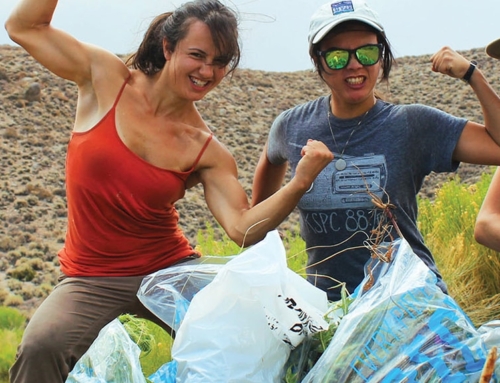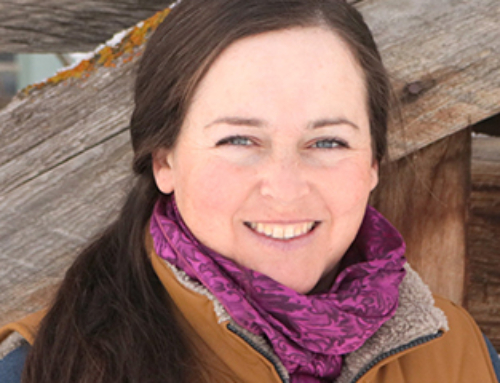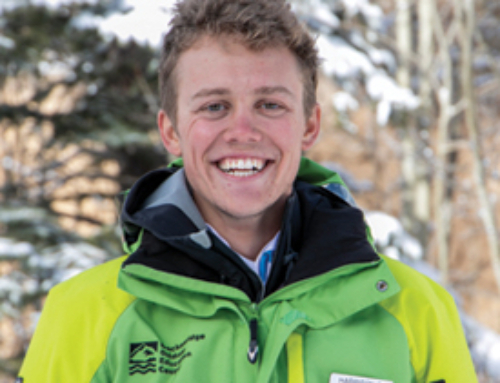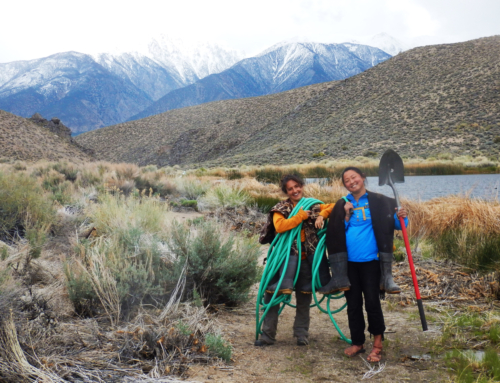
Further down the path, we regrouped around a beautiful desert mallow. Armed with hand lenses, our scouting trip for transplants to place in the new Deep Springs College pollinator garden had begun. We marked some prince’s plume, evening primrose, and beaver-tail cacti along the roadsides as ideal candidates.
As soon as we arrived at the orchard to prepare the plot, Shelby the garden manager grabbed Sara. “There are some women who’ve stopped by but don’t seem to speak any English,” she said. “I think they’re Russian – they’re lost and might need some gas.” Sara ran over, “Gavoriteh po Ruskie?” she asked. They stared back, confused. “French,” replied one of the women. “Ali!” shouted Sara, and I came running over, happy to put my French language skills to the test. Cowboy John and I escorted the women – both ooh-la-la-ing with relief – to the makeshift gas station. The Wild West had come to life for them that day, complete with a French translator.
Later, back at the freshly – tilled plot, Sara and I assigned each student a plant to cover the pollination syndrome spectrum. We designated a few sketchers to map out the garden, passed out the shovels, and I led a group in bat box construction. By noon, their plot was primed for planting, and our Deep Springs formula had proven successful: add one partlearning to one part labor, mix well, and voila the seeds of a brilliant pollinator garden have already started germinating.
When the idea was proposed last month, Sara and I jumped at the chance to take our Eastside Pollinator Garden Project over Westgard Pass to Deep Springs College. An isolated, highly-selective, all-male liberal arts school nestled in the White Mountains, Deep Springs has now become the latest in a series of learning environments where we have introduced students to the importance of pollinators and helped install pollinator-friendly habitats.






